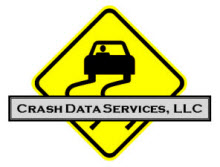One can begin a speech on any subject by claiming that, “It was a period of great change.” Often, the problem with change is not change. It is the failure to adjust to it. This has been less true in the last five decades.
It is unfair to compare today’s America with America 50 years ago. Genuine unemployment was rare. Disparities in income were moderate. Staff were everywhere. Businesses and public agencies got the phone. America sent Care Packages around the World. World population was dramatically less. Nearly 100% of the coral was alive. The oceans were not over-fished. Species were not endangered. Most people coupled up into families.
In the Analog World, experience counted. As one aged, he or she was not replaced by younger and younger individuals. Coders did not make non-coders obsolete. The Constant Encyclopedia (Goggle) had not yet replaced learning. No one obviously lived in his or her phone.
These dynamics played out in every social, economical and political sphere of activity. The transportation community was not spared. Robots have not yet fully replaced drivers. But robots control pedestrians living in their phones and bicyclist delivery troops surviving by their apps.
Following Distance, Logic and Accountability
In days or yore (the 1950s and 1960s), police officers would pull over motorists who didn’t signal. They would usually issue a warning. Those needlessly traveling in the left lane usually got citations. Motorists weaving received reckless driving citations. Safe following distance was taught in driver’s ed: One car length for every 10 miles per hour. Professional drivers improved on this formula with the “four-second rule.” Most tailgaters wishing to travel slightly faster blinked their headlights. Motorists in front obliged them by pulling to the right and letting them pass. The term “road rage” did not exist.
Fast forward to the Age of Entitlement. The highways are inundated with high-speed weavers who rarely signal, and who cut in front of vehicles less than a car-length behind. In the 1980s, in Los Angeles, I tried to explain following distance to a non-transportation-professional. He said, “Are you crazy? If I leave that much room, some jerk is going to cut right in front of me.” The concept of safe following distance worked in the Age of Values, with sufficient levels of law enforcement.
While I still consider it the best practice and the industry standard,
safe following distance can invite dangerous movements. These movement are unchecked in the Age of Entitlement.
Detecting the Perps
As a “mirror driver,” I was practicing principles of defensive driving long before I heard of the Smith System. Now, I can usually tell which vehicle is going to pass by and cut me off when it is still behind. The telltale signs are (a) high-end SUVs and (b) trucks. Luckily for bus drivers, I suspect truckers respect them. The same is not true for motorists. Motorists in less-fancy cars lie at the bottom of the safety pyramid. The Entitled own the roadways. They are never held accountable. So they own the roads. The rest of us simply have to adjust to them. Several friends of mine doing a less-than-perfect job at this bought the farm.
It would be naive to blame all this on the lack of law enforcement personal. For decades, we have had satellites and drones which can detect faces from thousands of mile above the ground. The lack of enforcement simply reflects it not being popular.
Camouflage and Carnage
Ancillary factors compounded these dynamics. Vehicles the same color as the roadway made marginal sense in the days of the Model T and its goal of penetrating the pre-depression, pre-safety-net market at the lowest possible cost. Vehicles were slow. There were not many of them. Urban populations were merely large. Many of the roadways were brown; some were green. There was little traffic. Most people had free time. So there was no point in tailgating. When it occurred, it involved low speeds.
In my youth, I recall cars of bright colors and huge fins. The 1950s and 1960s were flashy. Now, more and more vehicles are effectively camouflaged. Roadway black and gray are clearly the most popular colors. Camouflage is an increasing problem with closer and closer following distance, impunity of the Entitled and the resentment of low paid freight and delivery drivers operating large, heavy vehicles. Those operating less-expensive personal vehicles must drive defensively. Few are taught how to.
Grim Realities and Grim Reapers
Socio-economics and politics aside, these dynamics haunt bus and motorcoach drivers. Their heavy vehicles have longer braking distances. The pneumatic brake systems add another half second to reaction time. These vehicles accelerate sluggishly. They are obviously less maneuvrable. There is no rear window. They can rarely make right turns in their own travel lanes. Schedules are notoriously too tight. The Entitled know none of these things. They generally look down on bus drivers. Bus drivers operate in a multi-directional video game environment. The failures to keep up count far more than they do in real games.
Motorcoach drivers get the least respect. A loaded coach which replaces 40 or 50 cars still pays tolls. It pays fuel taxes. The disappearance of traffic cops has eliminated any signal priorities they might otherwise be afforded. (I think signal preemption devices on transit buses are a ruse.) In urban gridlock, motorcoaches have distinct disadvantages. They commonly get trapped in intersections they cannot traverse without squeezing through amber lights. The backlash among law enforcement is severe. Witness idling time limits and severe penalties for exceeding them. When have you seen a TNC ticketed for idling?
A small vehicle involved in a major collision may get some news coverage in a small town. U.S. motorists must carry only $15,000 of liability insurance (Its $1,000,000 in Canada). So most personal car maulings rarely translate into lawsuits: The carriers simply write a small check. When a motorcoach does such things, the collision is termed “catastrophic.” It gets nationwide exposure. The lawsuits run rampant. Because liability coverage for motorcoaches is usually $5,000,000 (in Canada its $25,000,000), plaintiff’s attorneys file against everyone in sight: Vehicle manufacturers and converters; dealers; municipal, county and state agencies; in rare cases, brokers. When a fivefold increase in coverage was proposed a few years ago, the notion sank like a stone.
Safety and Liability
With these dynamics, defensive driving is not a mere skill. It is a necessity. In their depositions, few professional drivers can identify even a handful of defensive driving principles.
Virtually every dynamic cited above makes driving a commercial vehicle frantic. These dynamics make defensive driving more challenging. But when one fails to perform this practice on the road, he or she often gets a chance to explain it in a court.
Amidst these sweeping changes, robots have advantages beyond the elimination of jobs. Robots have no reaction time. They experience no fatigue. Disciplines like driver assignment cease to exist. Interestingly, robots would appear immune to lawsuits. How does one sue a robot? They have no accident history to compared to that of humanoid-driven vehicles. And with or without robots, how does one sue an app?
I have actually tried to explain how to do this to countless attorneys with no interest in the hard work or complexity. All one need do is file for injunctive relief, asking the court to introduce some semblance of management into the business model. The risk of injunctive relief should make a defendant cower. But it does not: The few lawyers willing to do the work merely do so to crank up the settlement leverage. Marionettes never pay full price. Only puppets do.
While robot vehicles are inevitable, one can slow their spread by driving better. Every serious motorcoach accident does not merely cost big bucks. It quickens the reign of the robots. Those drivers wishing to prolong their jobs would do well to pay attention and share the urgency with their fellow-drivers.










